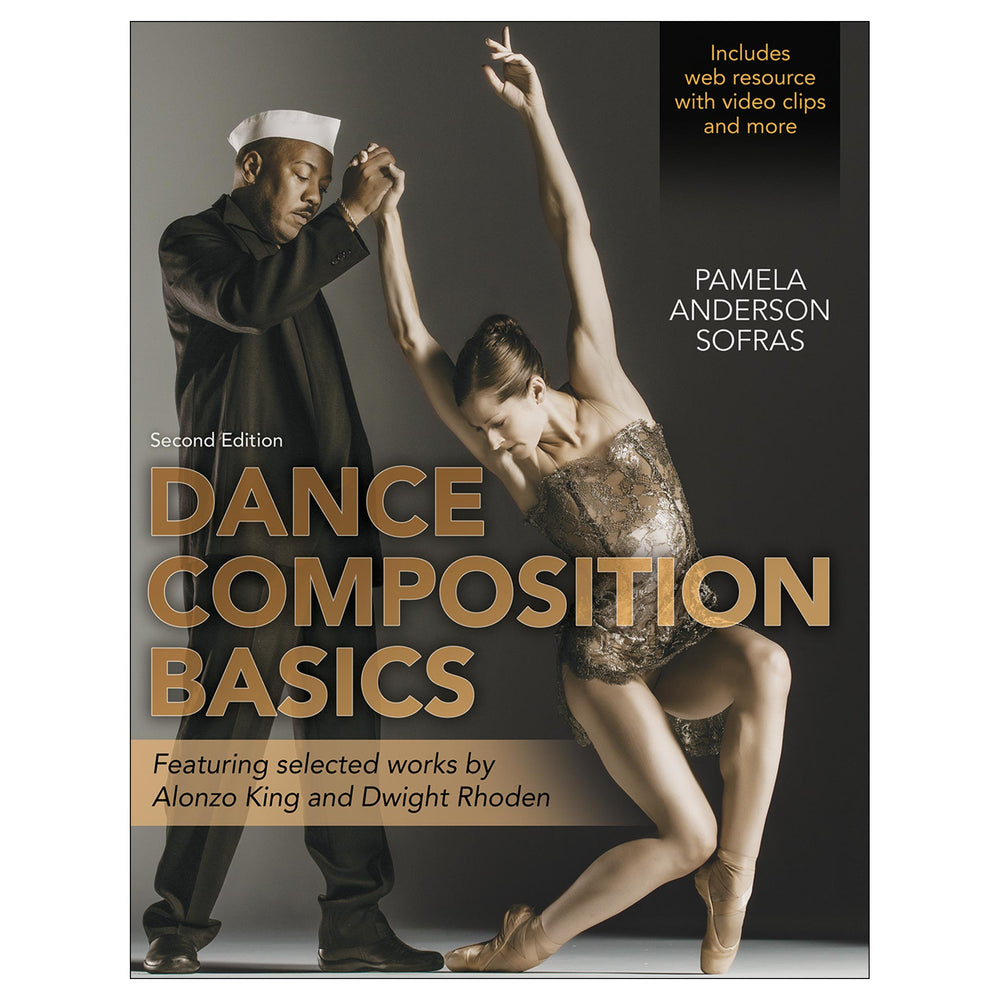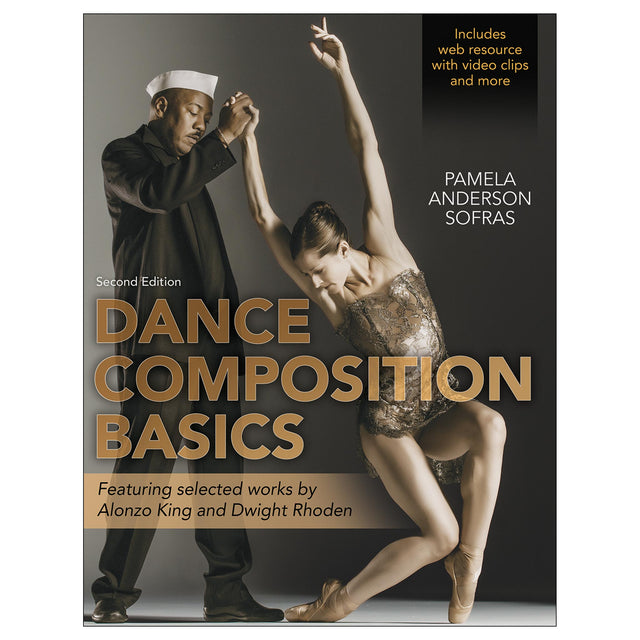Dance Composition Basics 2nd Edition Enhanced epub With Web Resource
Author: Pamela Anderson Sofras
$75.95 CAD
Access Duration: 10 Years
Dance Composition Basics, Second Edition, doesn’t just feature the works and brilliance of dance and choreographic legends Alonzo King and Dwight Rhoden—it is completely based on the choreographic operations and forms in three of their original works: Chants and Dreamer by King and Verge by Rhoden. All compositional exercises in the book are based on those three works, and the book itself is expertly crafted by Pamela Anderson Sofras, who has 34 years of experience teaching dance at the university level.
Dance Composition Basics, designed for beginning dance composition courses, introduces dancers to choreography through a series of problem-solving activities. The activities are starting points for novice dancers to embark on their own attempts at choreography.
Useful Tools
The book offers several useful tools for instructors:
- 27 lesson plans that draw from and highlight selected portions of original compositions by King and Rhoden
- 33 reproducible assessment and self-evaluation forms
- An instructor guide that includes a sample course syllabus plus written exams for each chapter
- PowerPoint presentations to guide students through each lesson
- A web resource featuring online videos that are closely tied to the lesson plans and provide a richer learning experience for students; students can access this resource inside or outside of class
The videos give students access to Alonzo King and Dwight Rhoden, highly successful and respected choreographers, who share their processes and techniques. Many video clips show the choreographers working on the same movement concepts featured in the corresponding lesson. Students will see the choreographers in action with professional dancers as they develop the movement material for each dance. Because students get to see the choreographers and dancers struggling with the same creative concepts they have been assigned, these clips add tremendous value to Dance Composition.
Book and Web Resource Organization
The text is split into five chapters, each of which features several lessons based on that chapter’s choreographic concept. Each lesson contains the following:
- An introductory statement and a vocabulary list
- A warm-up to prepare the body and focus the mind
- Structured improvisations that help dancers understand the movement concepts of the lesson
- Problem-solving activities that allow dancers to apply the concepts presented in the improvisations
- Discussion questions to engage dancers and promote understanding
- Assessment rubrics to guide evaluation of each dancer’s learning
The main menu of the web resource corresponds with the five chapters in the book. To guide students’ use of the videos, icons have been placed throughout the book, referring readers to additional information in the web resource. Reviewing the videos will provide further insight into the choreographic assignment. The web resource also contains all the discussion questions, assessments, and evaluations found in the book. Instructors can distribute these to students electronically or print them out. Instructors can also adapt the forms to meet their specific needs. The web resource is included with all new print books and some ebooks. For ebook formats that don’t provide access, the web resource is available separately.
The Learning Process
Dance Composition takes students through a systematic learning process: reading about a concept, discussing the concept, seeing the concept played out on video with professional choreographers and dancers, and exploring the concept through their own movement ideas. Through this process, which includes structured improvisations, students discover a movement vocabulary and original dance phrases. They then more fully develop their movement ideas, with specific movement assignments, and are given feedback by their peers and the instructor.
Invaluable Resource
Dance Composition Basics, Second Edition, is an invaluable resource for dancers of all styles, from ballet to modern jazz, as it introduces them to some of the compositional structures used by professional choreographers. Through the carefully designed lessons in the book and the expert examples on the video clips, students can use this resource to take their first confident and exhilarating steps into the craft of choreography.
Audience
Textbook for undergraduate or high school dance composition courses. Resource for dancers and dance educators.Lesson 1 Impulse: Origins of Movement
Lesson 2 Phrase: Linking Movements
Lesson 3 Gesture: Personal Vocabulary of Movement
Lesson 4 Shape: Body Design
Lesson 5 Problem Solving: Creating a Solo
Chapter 2. Space: Exploring the Expanse We Move In
Lesson 1 Air and Floor Pathways: Mapping the Route
Lesson 2 Diagonals: From Corner to Corner
Lesson 3 Symmetry: Balancing Shapes
Lesson 4 Positive and Negative Space: Sharing a Shape
Lesson 5 Balance: Supporting Each Other
Lesson 6 Imitation: Reflecting Each Other
Lesson 7 Problem Solving: Creating a Duet
Chapter 3. Time: Exploring Tempo
Lesson 1 Slow Motion: Dancing in Reverie
Lesson 2 Speed: Learning to Dance Quickly
Lesson 3 Pacing: Combining Different Pulses
Lesson 4 Accelerating: How Fast Can It Go?
Lesson 5 Problem Solving: Creating a Trio
Chapter 4. Energy: Force Generating Movement
Lesson 1 Inertia: Readiness to Move
Lesson 2 Opposites: Contrasting Energies
Lesson 3 Dynamics: Qualities of Movement
Lesson 4 Intensity: Increasing and Decreasing Force
Lesson 5 Problem Solving: Creating a Small-Group Composition
Chapter 5. Choreographic Devices: Creating Finished Compositions
Lesson 1 Call and Response: Antiphonal Movement
Lesson 2 Canon: Dancing in Unison a Few Counts Apart
Lesson 3 Directional Mirroring: Parallel Reflecting and Reverse Reflecting
Lesson 4 Variation: Interweaving and Varying Patterns
Lesson 5 Problem Solving: Creating a Movement Suite
Phrase: Linking Movements
Problem Solving: Creating a Movement Suite
Symmetry: Balancing Shapes
Instructor guide. Includes a sample course syllabus plus written exams for each chapter.
Presentation package. Features PowerPoint presentations to guide students through each chapter.
Web resource. Features online videos that are closely tied to the lesson plan text and provide a richer learning experience for students, who can access this resource inside or outside of class.





